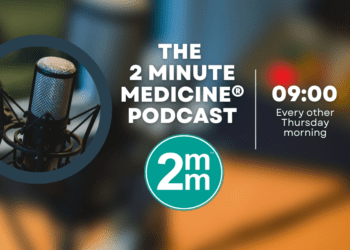Childhood antibiotic use not linked to celiac or islet cell autoimmunity
1. In a prospective study of children at-risk for development of type-1 diabetes, antibiotic use was not associated with the development of islet or celiac disease autoimmunity.
2. The investigators accounted for geography, which can be a major confounding variable.
Evidence Rating Level: 2 (Good)
Study Rundown: The increased prevalence of autoimmune disorders in developed nations has been hypothesized to partially attributed to altered immune development after the introduction of antibiotics. Some animal studies have suggested certain antibiotics may alter personal microbiomes and influence the risk of development of autoimmune conditions such as type 1 diabetes (T1DM) and celiac disease (CD). The current study followed a cohort of children with HLA genotypes linked to high risk of development of T1DM with regular measurements of autoantibody titers. There was no observed correlation between exposure to antibiotics and development of CD/T1DM-associated autoantibodies.
The trial was a well-designed prospective cohort with validated measures of autoantibodies and a sufficient size to evaluate risk with the most commonly prescribed antibiotics. The main limitations of the study included the reliance on parent reported antibiotic exposures, use of autoantibody development as primary outcomes rather than disease development. Additionally, the antibiotics most commonly implicated in animal studies were not well represented in the study.
Click to read the study, published in JAMA Pediatrics
Relevant Reading: The role of the intestinal microbiota in type 1 diabetes mellitus
In-Depth [prospective cohort]: This study used data obtained from the prospective cohort from The Environmental Determinants of Diabetes in the Young (TEDDY) study, which screened children in 4 countries for HLA genotypes at high risk of development of T1DM. High risk children were included and blood-work obtained for autoantibody evaluation every 3 months up to the age of 4 and biannually after that. Children were considered to have positive antibody testing if they had two consecutive detectable measurements, three months apart, evaluating for the following: insulin autoantibody (IAA), glutamic acid decarboxylase autoantibody (GADA), and tyrosine phosphatase IA-2 autoantibody (IA2A), and tissue transglutaminase autoantibodies. Antibiotics exposure was determined by prospectively gathered parental report.
A total of 5.5% of children developed islet cell autoantibodies, while 11.9% developed CD-associated autoantibodies. Use of antibiotics was not associated with risk of development of autoantibodies (hazard ratio [HR], 0.98; 95%CI, 0.95-1.01).
Image: CC/Wiki
©2017 2 Minute Medicine, Inc. All rights reserved. No works may be reproduced without expressed written consent from 2 Minute Medicine, Inc. Inquire about licensing here. No article should be construed as medical advice and is not intended as such by the authors or by 2 Minute Medicine, Inc.




![Oral amoxicillin as effective as injectable benzylpenicillin-gentamicin for infants with infection in which referral not possible [AFRINEST Trial]](https://www.2minutemedicine.com/wp-content/uploads/2015/04/NOVAMOXIN_antibiotic-350x250.jpg)


